One of the most central parts of the drumming path is learning rhythms.
The more rhythms you know and can play, the better! Every rhythm has its own character or flavor of energy that you can use in your expressive drumming for various effects.
Step 1: Understand Rhythm Language
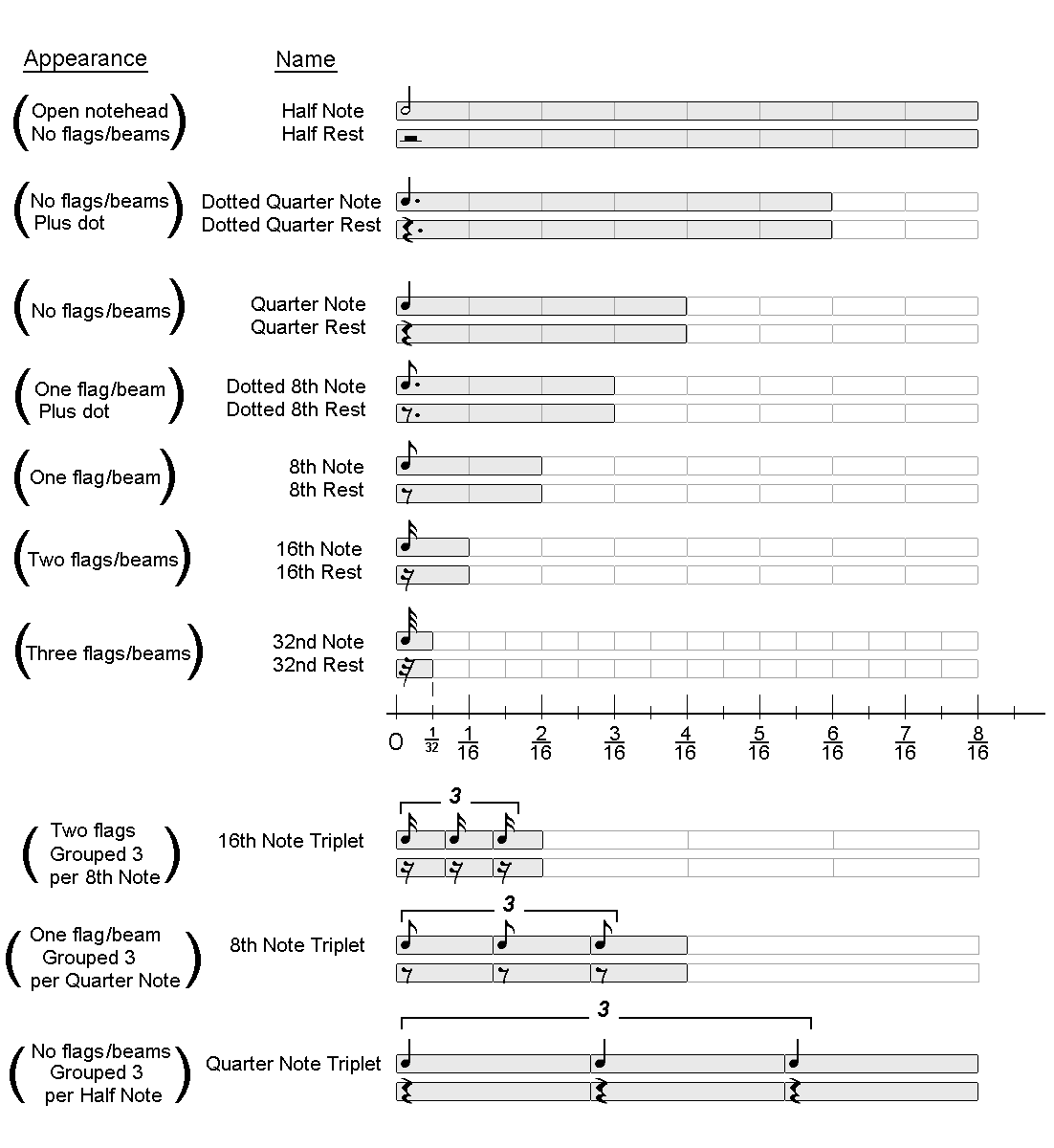
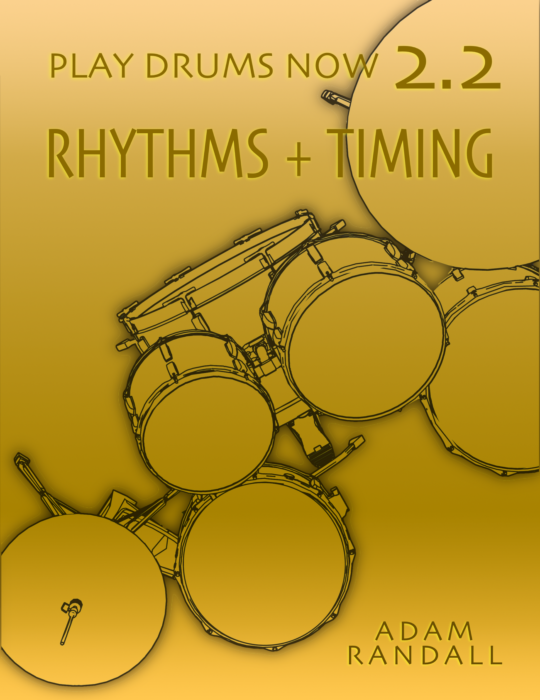
The above diagram will get you started in understanding how rhythms are created by combining notes and rests of different length. For a full training in this subject, check out the book “Play Drums Now 2.2: Rhythms + Timing”. It has full training information on how to read and understand rhythm notation, as well as short and long rhythms in each of the four feels of music. Check it out here.
Anatomy Of Rhythms
All rhythm begins with a grid of steady counts, like seconds ticking on a clock.
By using some counts for spaces and some for notes, a ‘rhythm’ is produced.
This is the feeling you want to program yourself with, throughout your drumming career.
A ‘pulse rhythm’ is simply a pattern of steady notes.
For example, here are a couple ‘pulse rhythms’. Notice how all the notes are evenly spaced:

Here is an example of a rhythm created by including spaces in the ‘pulse rhythm’. As you can guess, there are millions of possible rhythms of different lengths, all created in this way.

Step 2: Grow Your Rhythmic Vocabulary
What is a rhythmic vocabulary? It is your collection of rhythms that you know how to identify, read, and play on demand. It provides the basis for everything you know how to do on the drums. Furthermore, it is directly used for your fills and improvisation: it forms the basis for your creativity.
Which Rhythms To Learn?
How do you find a good starting point for the vast universe of potential rhythms? There is the risk that you spend too much time learning just one type of rhythm, without being exposed to a healthy variety. Over the course of your drumming career, you should continually absorb new rhythms, and you will never run out.
Start by learning rhythms in each of the four common feels in music, and especially the one-beat length rhythms.

Four Common Feels In Music
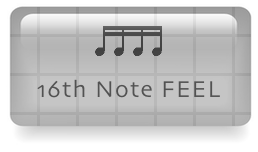

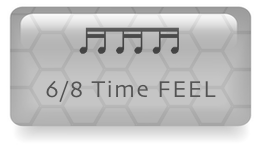
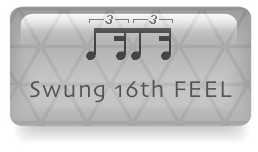
The most important thing you can do for your rhythmic vocabulary is to make sure you know some rhythms in each category of the four common feels of music. This will prepare you for any new material you run across.
For more info on this topic, see the lesson on The ‘Feels’ Of Music / Spotify Playlists.
Full Spectrum Of Vocabulary: 1-Beat Length Rhythms
Make sure you cover a wide enough variety of each type of rhythm so that you will not be surprised or challenged by any new rhythm.
How do you do that? Simple – Start by learning all the one-beat length rhythms in each category, since there are few of them compared to long rhythms. Here are the benefits of doing so:
- There are a limited, manageable number of these rhythms in each category.
- They are easier to learn and gain speed with, because they are short to learn.
- They will expose you to all the different timing difficulties/challenges from each category, so learning longer rhythms will be less challenging; you won’t run into any that are prohibitively difficult.
- When rhythms are written, they are often grouped one beat at a time and their beams are joined together. Learning this category of rhythm is like a shortcut for building your reading skills.
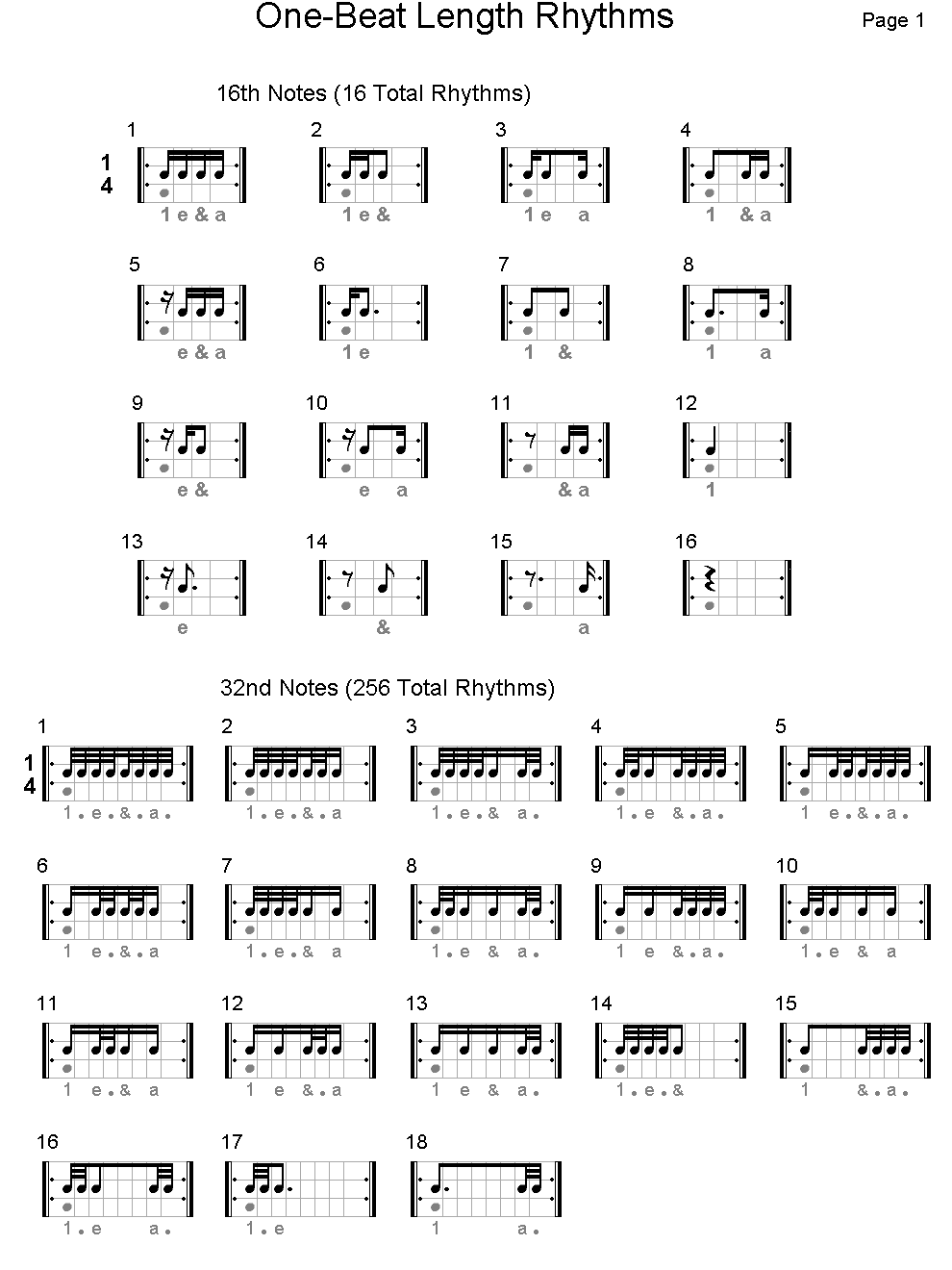
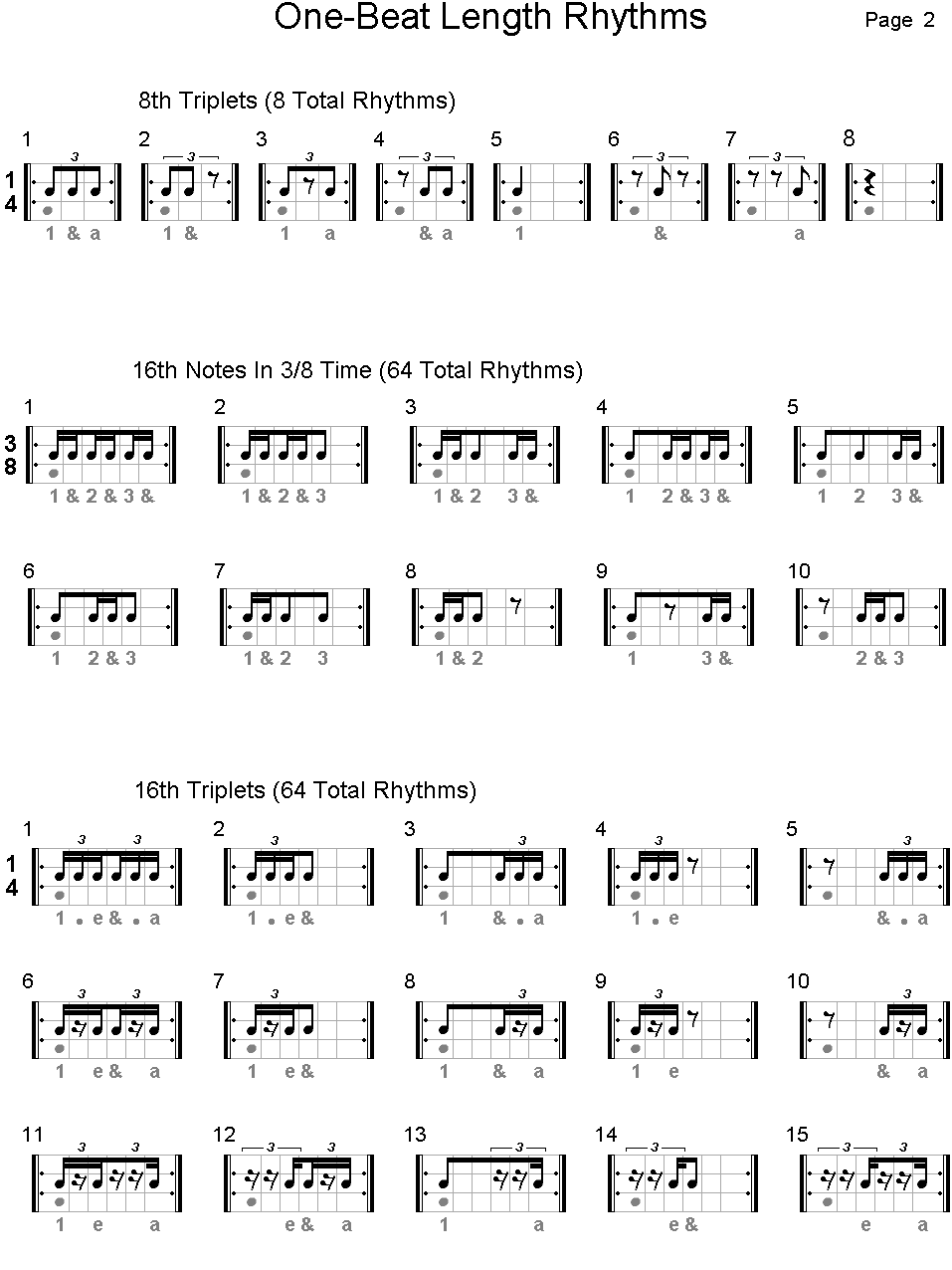
Tips For Learning Rhythms
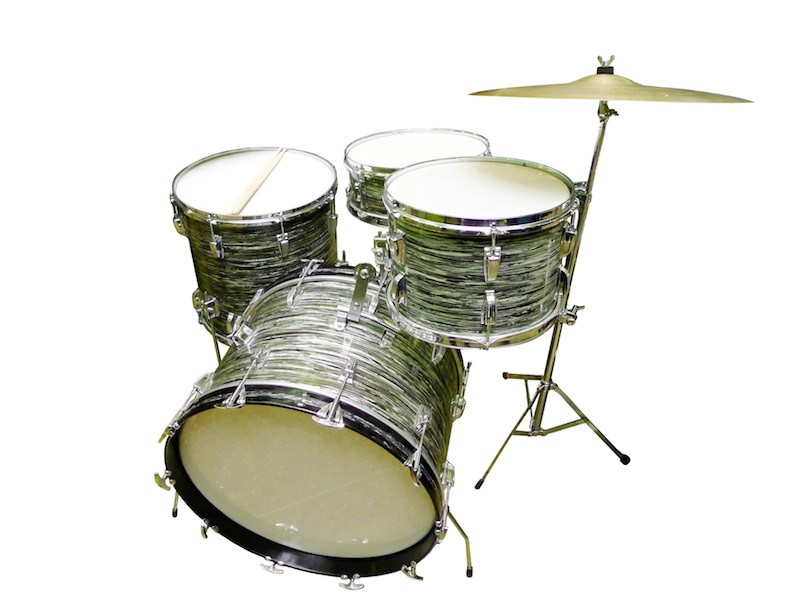
Essentially, there are a few goals with learning rhythms:
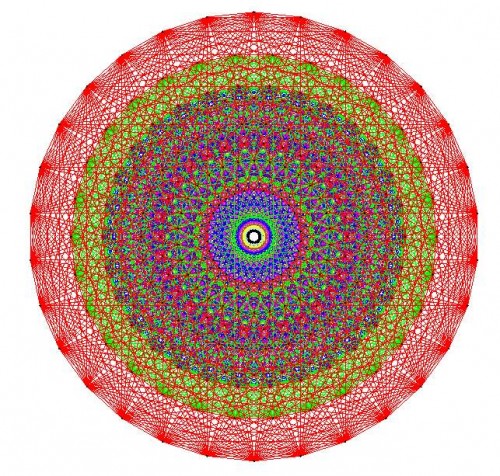
Tip #1: Be A Drum Machine
Your body needs to act as a reliable machine that produces the sound you want, with the steady accuracy of an electronic drum sequence.
Program Your Internal Clock
Timing is a psychological skill. You control your body with your mind for the most part, so your mind needs to be an accurate metronome for your playing. You can train yourself mentally to have accurate perception of steady timing, by ‘recalibrating’ your internal clock.
You need to program the sense of a ‘grid’ into yourself mentally and physically, in all four common ‘feels’ of music. Your goal should be to FEEL any type of music. (Check out the lesson on How To Use A Metronome here)
Program Your Physical Clock
You also need to calibrate your physical clock, by training your physical playing at a full spectrum of tempos.
Essentially the practice you should use is a series of steady pulses, followed by various rhythms.
Timing Is Vital To Music
Music comes to life when the timing is steady – it has to do with harmonic reinforcement, and sympathetic vibration with human wavelengths.
You need timing skills because the art of music needs a canvas of steady timing to paint on.

Tip #2: Build Rhythmic Vocabulary
Create a large rhythmic vocabulary for the sake of your timing and your musical creativity.
Musical Vocabulary, Rhythmic Vocabulary
Your musical vocabulary is the collection of material that you can play on demand, with physical memory.
Your rhythmic vocabulary is the same idea, but pertaining to rhythms. It is the collection of rhythms you are familiar with and can execute on demand.
Rhythmic vocabulary is directly related to your creative abilities. The more rhythms you have in your database, the more expressive you can be. Rhythms are incredibly expressive, and drummers need to use rhythms for expression since they don’t have a scale of notes to play with.
Start with short (one-beat length) rhythms.
The reason to learn one-beat length rhythms at first is that it will set you up to make more progress with your goals, and will help you learn more quickly.

Tip #3: Practice Reading Rhythms
Learn to read and understand rhythms. This is a language you will see throughout your career, so be fluent with it.
Here are some ways you can better internalize rhythms you’re learning:
- Read and write the rhythm
- Identify and remember counts of the rhythm
- Remember the sound of the rhythm
- Execute the rhythm accurately
- Know the character/energy of the rhythm
- Explore the sonic possibilities of the rhythm when creatively phrased around your drumset
Have fun building your rhythmic vocabulary!
